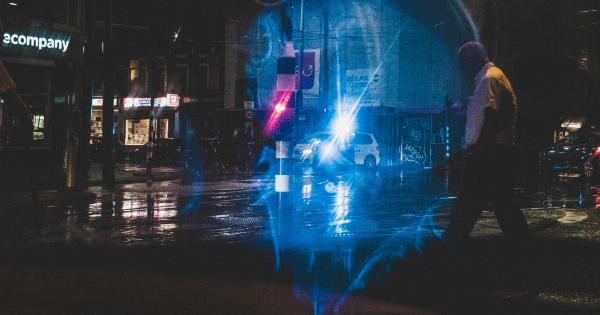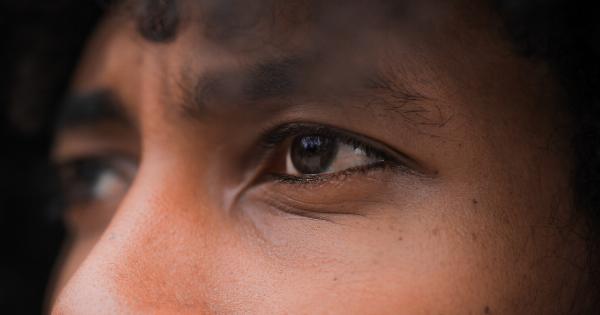LED lamps have grown in popularity over the last few decades as an eco-friendly and energy-efficient alternative to traditional light bulbs. However, recent research has revealed that LEDs may not be as safe as we once thought.
In this article, we will explore some of the hidden dangers associated with LED lamps and what you can do to protect yourself.
1. Blue Light Hazard
One of the major concerns about LED lamps is their emission of blue light. While blue light is essential for regulating our biological clock and sleep patterns, exposure to too much can cause serious damage to your vision.
According to a study by the American Academy of Ophthalmology, exposure to excessive blue light can lead to macular degeneration and cataracts.
2. Flicker Effect
LED lamps operate by rapidly switching on and off. While this may seem insignificant to the human eye, it can cause a flicker effect that can be harmful to some people.
For those with sensory issues, such as autism, the flicker effect can cause headaches, eye strain, and even seizures. Additionally, this flicker can trigger migraines and cause eye strain in adults.
3. Electromagnetic Radiation
Another cause for concern for LED lamps is their emission of electromagnetic radiation. While LED lamps do not emit the same levels of radiation as traditional fluorescent tubes, their proximity to our bodies can cause issues.
If you spend long periods of time in close proximity to LED lamps, you may experience skin damage or even cell mutation.
4. Contributes to Light Pollution
LED lamps are known for their brightness and high definition light. However, they also contribute to light pollution in urban areas. This overexposure to artificial light can disrupt the circadian rhythm and cause sleep difficulties.
Additionally, it can also affect wildlife. Many nocturnal animals rely on the absence of light to know when to forage or hunt. Artificial light can confuse their biological rhythms and cause them to stray from their natural patterns, leading to population decline.
5. End-of-Life Disposal
When it comes to disposing of LED lamps, it’s important to note that they cannot be recycled like traditional light bulbs.
LED lamps contain a variety of harmful materials such as lead and mercury that can be dangerous if not disposed of responsibly. If they end up in landfills, they can leach into the soil and water, causing health problems for both humans and wildlife.
Therefore, it’s essential to dispose of them in accordance with local regulations or seek the help of specialized recycling centers.
6. Migraines, Fatigue and Stress
LED lamps can cause migraines, fatigue and stress due to their high intensity light. Blue light in particular, has been shown to aggravate headaches and migraines, creating strain on your eyes and a feeling of fatigue.
By safeguarding the environment and reducing the impact of LED lamps, it is possible to obtain a comfortable work environment, reduce departmental absenteeism and enhance employee well-being.
7. Children and Photochemical Reactions
Children are especially vulnerable to the dangers of LED lamps. When exposed to blue light for prolonged periods of time, a photochemical reaction can occur that can cause damage to the retina.
Children often spend long hours playing on electronic devices or doing homework, putting them at risk of harmful exposure to LED lamps. To prevent this, reduce the amount of time children spend in front of screens or use appropriate glasses to create a protective filter against blue light.
8. Color Temperature
LED lamps come in different color temperatures, ranging from warm to cool. The color temperature can have an impact on human health and well-being.
For instance, blue light, which falls on the cooler spectrum, can negatively impact our sleep patterns and circadian rhythm. In contrast, warm light, which falls on the warmer spectrum, can create a relaxing environment and help soothe your senses.
9. Glare from LED Lamps
LED lamps are known for their high intensity light, which can also create glare. Glare can cause discomfort and even lead to accidents. For example, when driving at night, the glare from oncoming headlights can cause temporary blindness and impair vision.
To prevent this, it is important to use well-designed fixtures and position the LED lamps at the appropriate angles.
10. Eye Fatigue
Finally, LED lamps can cause eye fatigue. The high intensity light and blue light can create eye strain, leading to dry eyes and headaches.
To prevent this, it’s essential to take regular breaks from screens, adjust the brightness of your devices and seek advice from an eye specialist.
Conclusion
While LED lamps have several benefits, it’s important to be aware of their potential dangers. From blue light hazard to electromagnetic radiation, LED lamps can have a serious impact on our health and the environment if not used responsibly.
By taking the necessary precautions, we can protect ourselves and our environment from the hidden dangers of LED lamps.




























